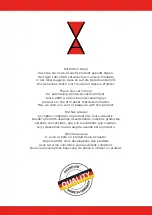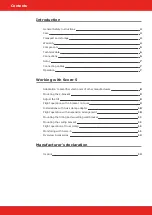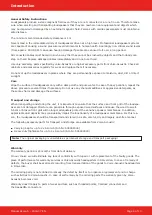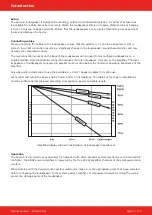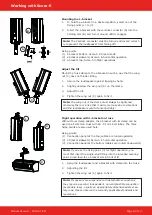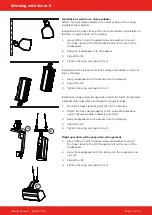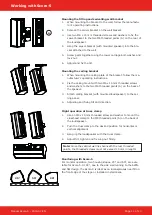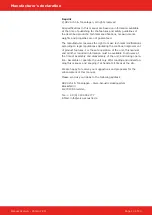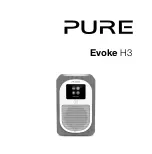
Page 8 of 13
Manual Score-5 - 2018-07 EN
Adaptation to amplifier electronics of other manufacturers
Because of its internal passive linearization of the frequency response, the Score-5 can also be operated on any
other amplifier electronics. To protect the 5“ drivers at higher volumes from too much excursion by low fre
-
quencies, it is necessary to set a lower crossover frequency: High-Pass filter: 65 Hz, Characteristic: Butterworth
24 dB/Okt. In addition, the sound image can be minimally improved by a Bell filter: Center frequency 2.36 kHz,
Quality 6.0 and Gain: -2.00 dB.
Type
Freq
Q
Gain
Bell
2.36 kHz
6.0
-2.00
HPF
65 Hz
Butterworth 24 dB/Okt
HPF
114 Hz
Butterworth 24 dB/Okt
For an optimal sound result when operating with a subwoofer, the lower cut-off frequency must be adapted to
the Score-5 accordingly (e.g. HPF 114 Hz) or, with overlapping frequency ranges, the phase position must be
metrologically adjusted to each other.
If the Score-5 is used for music transmission without bass support, the lower frequencies can be slightly increa-
sed by means of a Low-Shelf filter: Center frequency 155 Hz, Quality 14.1 and Gain: 3.00 dB.
When operating
the Score-5 as a stage monitor, the Low-Shelf filter is not recommended, because the low frequencies gain
energy through the ground coupling.
Type
Freq
Q
Gain
Low Shelf
155 Hz
14.1
3.00
Bell
2.36 kHz
6.0
-2.00
HPF
65 Hz
Butterworth 24 dB/Okt
Note: Overdriven signals must be avoided throughout the entire transmission chain. They generate consider-
able thermal and mechanical stresses that can destroy loudspeakers. This is especially true when loudspe-
akers are powered by amplifiers that can deliver less than twice the AES power of the loudspeaker. Only
professional power amplifiers with clip limiters should be used for safe operation.
Working with Score-5


